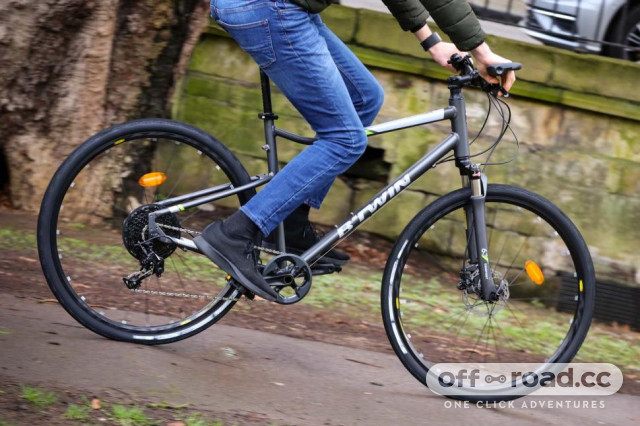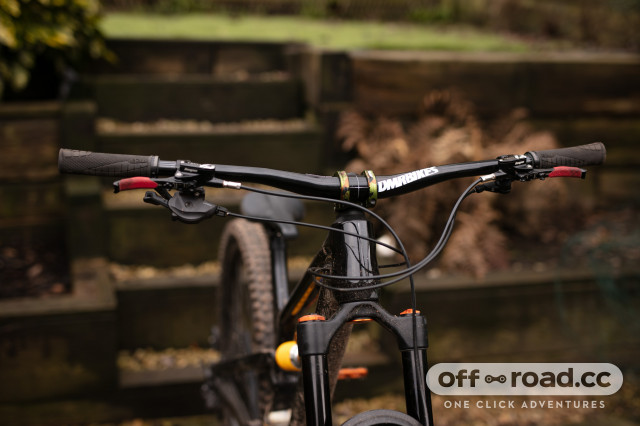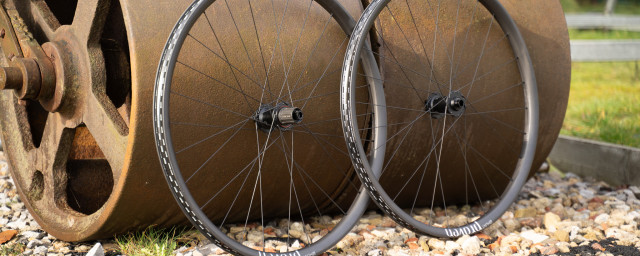Mountain bike vs hybrid bike - understanding the differences

If it has straight handlebars, it must be capable off-road, right? Not quite. The lure of purchasing a hybrid bike, with its straight handlebars and large volume tyres, and using it for commuting and off-road riding, is strong. But it’s often the wrong approach.
Mountain and hybrid bikes might share some similarities regarding appearance and broad component choices, but they are markedly different.
- How to start mountain biking
- Gravel bike vs mountain bike: what are the differences?
- Best mountain bikes 2023 - top options from cross-country to Enduro
Most cyclists can shape their logic around what a mountain bike is, but hybrids? Well, hybrids are multipurpose rigid (no suspension) bikes, designed to roll fast on the cycle lane when you are on an active commute. Their hybridity is the ability to go beyond the tarred (or paved) cycle lane, and use off-road terrain, to link your riding route. Be that a park detour, gravel road or some very smooth forest singletrack.
To enable hybrid bikes' all-terrain riding ability, most contemporary designs are older-generation hardtail mountain bike frames, with some additional mountain features. Hybrid bike product planners know that commuters value packing space and all-weather riding ability. And that means you need all the frame mounts possible for those cargo racks and mudguards.
What is a hybrid bike?
One of the most distinct differences between hybrids and true trail-riding mountain bikes is the latter’s lack of cargo mounts or clearance for huge mudguards to keep the mud or road grit from ruining your riding gear during those winter month commuter rides.
Hybrid bikes prioritise cargo-carrying ability or elaborate fender mounts. You won’t mind many dual-suspension mountain bikes that can accommodate rear cargo mounts or elaborate fenders because the rear wheel and frame triangle need to move as the suspension activates.
Geometry is the currency of frame comparison in cycling, and here hybrid and mountain bikes differ a lot. On a commuter ride, you rarely descend a steep section of road with tight corners. And unless something has fallen off the back of a lorry (truck), you don’t have to lift the front wheel or ride over obstacles. Therefore, hybrid bikes have very mild geometry, with steep head and seat angles, to facilitate an upright rider posture.
Mountain bikes prioritise descending geometry numbers. This is where your mountain bike’s suspension and geometry interplay, delivering the stability and agility that is such a rewarding aspect of trail riding. Tight switchback corners, fast berms, rock gardens, drops and jumps. All these trail features require a rider and bike to intuitively work together.
A slacker head angle and longer reach create confidence on a mountain bike, placing the rider in a more stable position when the terrain gets steep and rowdy. Mountain bikes have a head angle of between 65- and 68 degrees, while most hybrid bikes have a head angle of 70 to 71 degrees.
Handlebar size
Touchpoint components also differ between hybrids and mountain bikes. This is an extension of the geometry theme, as your cockpit (the combination of stem and handlebar), is an essential leverage point for steering and stabilising the bike. Hybrids and mountain bikes both have flat handlebars, but there are significant differences in width and shape.
Discovering a new mountain bike with handlebars narrower than 720mm is rare. Most use 760mm, and for longer travel enduro and downhill bikes, 780-800mm handlebars are not unusual. You are very unlikely to encounter a flat bar wider than 680mm on a hybrid bike.
Mountain bike handlebars can also feature a lot of rise, anything from 5mm to 40mm. That’s how much higher the handlebar ends, where the grips go, can be from the middle, where the stem clamps. Why are some mountain bike handlebars shaped with some much rise? It’s for riders who ride very steep terrain and want to prevent that feeling of ‘falling forward’ over the handlebars when negotiating those high technical singletrack descents.
Gearing differences
Mountain bikes are ridden in steep terrain. That’s a given. To get to the top of that rewarding singletrack descent means conquering the topography that was deemed ideal by trail builders in the first place. This is why most mountain bikes have 1x12 drivetrains, with wide-ratio cassettes. Mountain bikes often feature extreme climbing gears, with 50 or 52 tooth cogs.
Hybrid bikes use a more traditional gearing approach, often still adhering to 2x systems, with gearing more aligned to having the smallest possible steps between ratios.
The goal with hybrid bike gearing is to facilitate the most efficiency on that commuter route, which would never include a climb that requires the extreme climbing gears needed on a mountain bike.
Tyre sizes and tread patterns
Tyres. They deliver the traction to help us turn, convert braking power to deceleration, enhance ride comfort across the terrain and mediate our pedalling efficiency. It’s here where the hybrid and mountain bikes strongly diverge regarding the specification.
Hybrid bikes roll 700c tyres, in widths between 32- to 42mm. Unlike mountain bike tyres, these tyres have very little tread texture relating to grip blocks. They are designed to roll with very little resistance on paved roads and offer very little grip anywhere else.
To find grip when rolling over rock or roots, or leaning through a dusty or muddy corner, mountain bike tyres feature distinct tread block patterns, which dig into the terrain to enhance grip. Mountain bikes have also defaulted to the 29er wheel size, with tyre width in the 2.25-2.6-inch range, much larger than any tyre on a hybrid bike.
Mountain bike tyres are larger, heavier and roll much slower than hybrid bike rubber, but offer excellent puncture protection. Hybrid bike tyres are very vulnerable to loss of grip or puncturing when riding off-road. Even in slightly muddy conditions, you’d find a hybrid bike very challenging to ride and control off-road.
Hybrid bikes are mostly used on tarred roads and paved commuter lands. They can venture onto mild off-road terrain when required, but this is not their primary purpose. You’d have an awful with one on a dedicated singletrack trail because the handlebars are too narrow for proper leaning steering inputs. And those low-resistance tyres would quickly clog with soil, nullifying their available grip.
The hybrid bike’s hybridity should be understood in its purpose as a commuter, with occasional all-terrain detouring capability, when required. It is not an off-road bicycle, in principle, something which it can be quite poor at if you are an adventurous rider.












